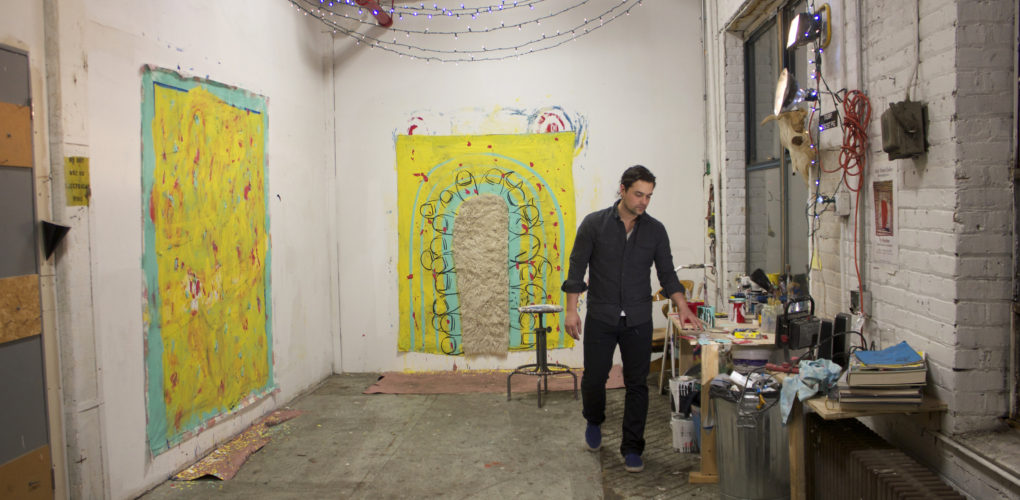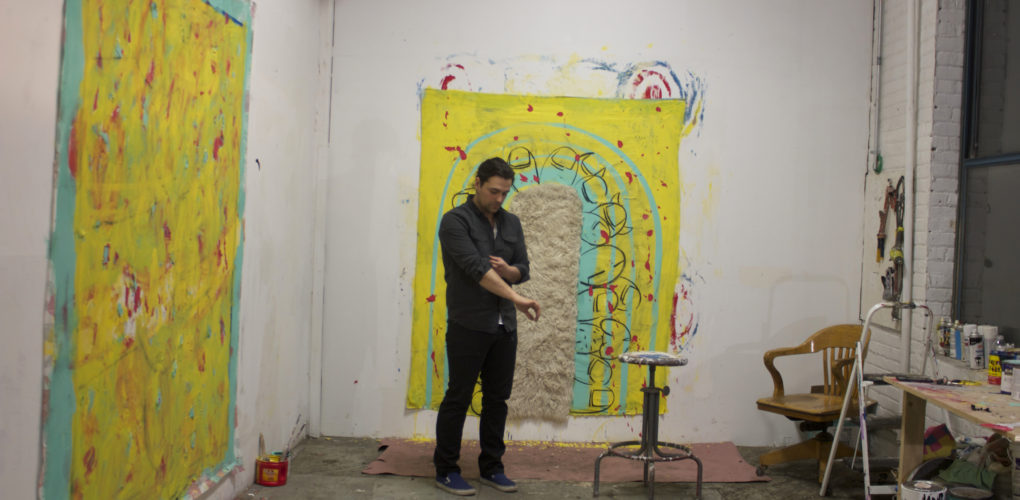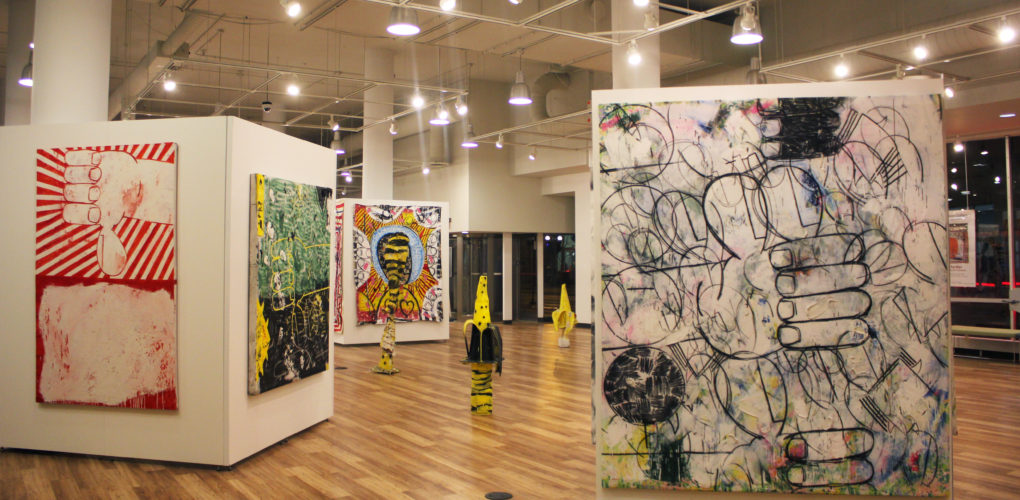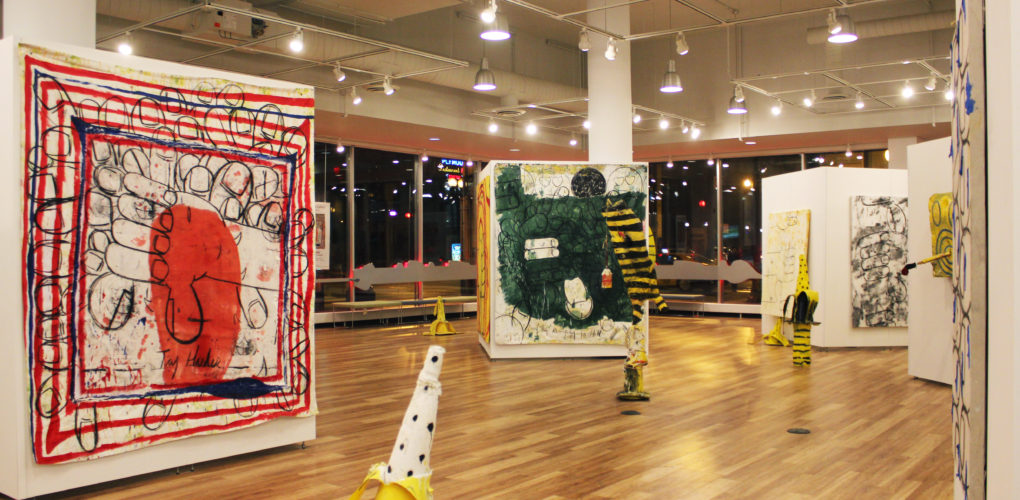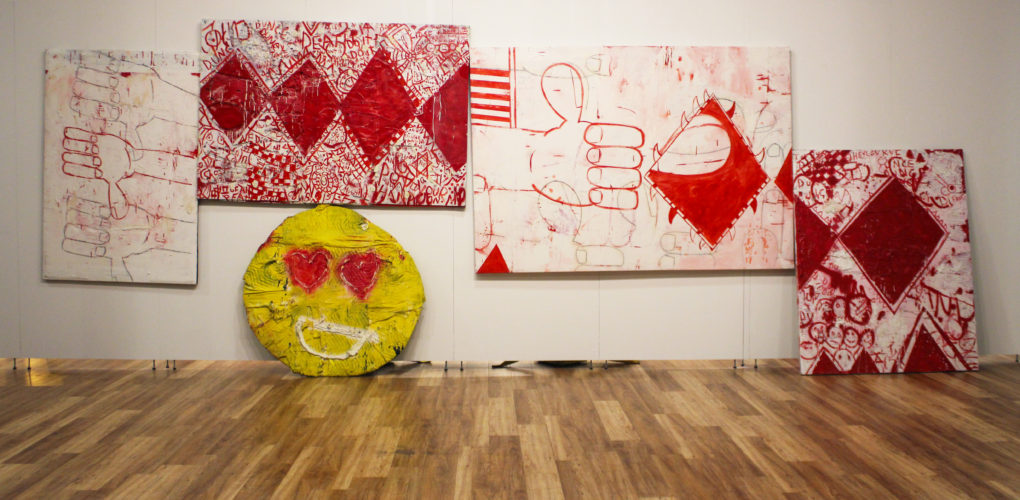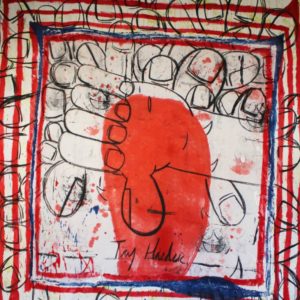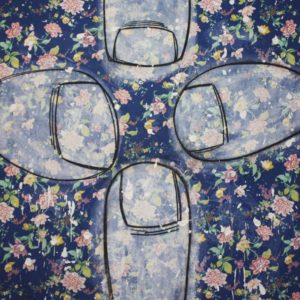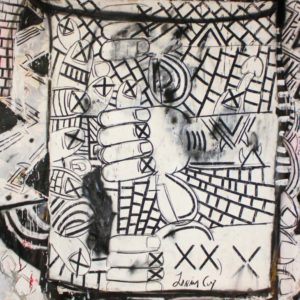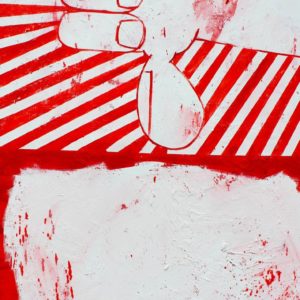One to Watch
 Eric Stefanski paints the dualities of culture
Eric Stefanski paints the dualities of culture
Eric Stefanski’s paintings explore the duality between high and low aspects of our culture. He focuses on the importance of symbols, culling imagery ranging from the human form to emojis from the art historical canon and pop culture. Eric also experiments with mediums, juxtaposing oil, acrylic, and charcoal with less traditional silicone, enamel, and fabric.
Eric received a MFA from the School of the Museum of Fine Arts in Boston and previously studied at The School of the Art Institute of Chicago. He received the Walter Smith Painting Recognition Award in 2010. Eric’s works have been shown in solo and group exhibitions across the United States, most recently at Robert Morris University in Chicago and Fort Point Arts Center and Lens Gallery in Boston.
What are the major themes you pursue in your work?
One of the major themes that I keep going back to is the duality between the high and low aspects of our culture. Subjects such as the human hand or banana can be found in both the art historical canon and the emojis that we use everyday are used as a stand in for language.
How did you first get interested in your medium, and what draws you to it specifically?
I mainly use acrylic, charcoal, silicone, and enamel. I mix the silicone with pigment and it creates a workable paste that has the consistency similar to oil paint which of course has this esteemed quality in art. Also very rarely will I use canvas but instead fabric that is gessoed and stained from behind. I have difficulties starting a new work if it is a plain canvas, but if it already has a pattern on it, I can react to the images printed on it and the marks from the staining.
How has your style and practice changed over the years?
My practice has a large drawing component to it now. Before the paintings were made in response to my sculptures.
Can you walk us through your process? Do you begin with a sketch, or do you just jump in? How long do you spend on one work? How do you know when it is finished?
First I begin to look for fabric with a pattern that I find interesting. Then I begin to stain, pour and apply paint directly on to the surface with either brushes or paint knives. Once it has dried, I begin to draw and build up the surface with different textures. I look at the paintings as a large sketch. Hopefully there is an immediacy that is conveyed.
What are some of your favorite experiences as an artist?
The built in community and the support that is shared among fellow artists.
Prefer to work with music or in silence?
Music for sure.
